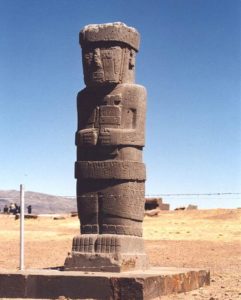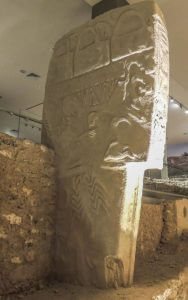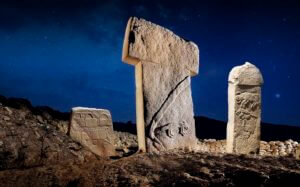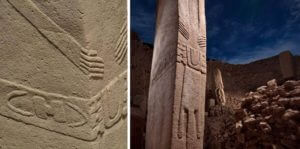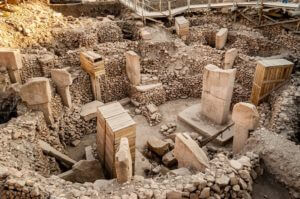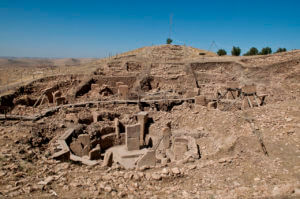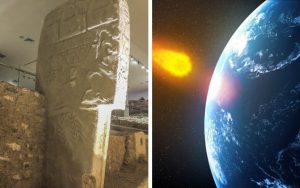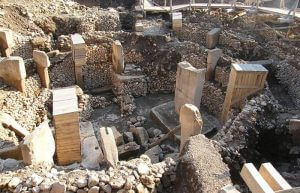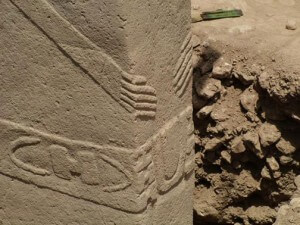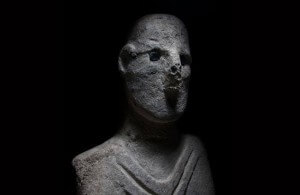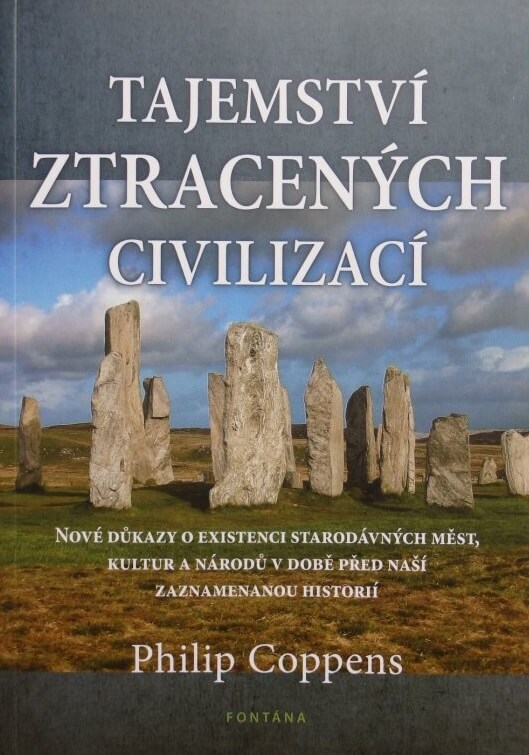
20 Facts about Göbekli Tepe Temple Complex
 03. 06. 2020
03. 06. 2020

The original inhabitants of the area known as Göbekli Tepe were, according to archaeologists, an organized group of gazelle hunters. Archaeologists believe that these people, hunting and harvesting, stood at the birth of an ancient temple complex that is at least 6 and half a thousand years older than the famous Stonehenge and even 7 a thousand years older than the oldest pyramid in Giza. Göbekli Tepe Temple, whose age is estimated to be over 12 for a thousand years, is a clear proof of a sophisticated society that existed for tens of thousands of years ago.
Göbekli Tepe
The temple is located near the ancient city of Urfa in present-day Turkey and is still considered one of the most important ancient sites in human history. Experts are still not sure who and how actually built this respectable building more than 12 years ago. At the same time, the stated time learning is based only on organic sediments and it does not really say anything about the time when the stones were really transported to the place.
Göbekli Tepe is considered at all the oldest temple in the world, while less than 10% of the whole complex has been discovered so far. Whoever built the temple built it so that even the outermost parts hidden deep underground would be preserved. Some archaeologists claim that the temple served as a burial ground, although it found no real evidence for it.
Göbekli Tepe is often referred to as Göbekli Tepe Stonehenge in the desert or as well Turkish stonehenge. The temple consists of a complex of mostly circular and oval stone formations perched on top of a hill. An initial search of the site was carried out in the 60s by anthropologists from the universities of Chigac and Istanbul; they agreed that it was an artificial hill serving as an ancient burial ground. Researchers estimate that the building was built 12 years ago, at least 10 years BC.
To this day, researchers are unable to explain how it is possible that such a technically advanced structure was created in Upper Mesopotamia at the end of the last ice age, when hunters and gatherers dealt with the issue of their own survival on a daily basis. According to researchers such as Graham Hancock and friends, the building is rather older and was deliberately covered with soil before the last great flood to be preserved for future generations. Archaeologists have also discovered that the construction was intentional by someone preserved. The cover certainly occurred several generations later than it was built. We miss the context. The initial modern excavations were undertaken in 1995 by the professor with the help of the German Archaeological Institute Klaus schmidt.
Stone pillars Göbekli Tepe
Previous excavation work and geomagnetic results show that there are at least 20 stone circles on the site, which archaeologists call sanctuary. All stone pillars in temple they are T-shaped and reach a height of 3-6 meters. Each of the pillars weighs about 60 tons. Even current technologies would hardly be able to move and deploy 60-ton stone pillars inside the complex Göbekli Tepe.
Research estimates that at the time of construction, at least 500 people would be needed to move the stone pillars. But who organized and managed them and in what way, especially at a time when, in the opinion of archaeologists, humanity functioned exclusively on the instinct of self-preservation? If archaeologists were right, then the crucial question in the air would be how the prehistoric hunter and gatherer transported and placed the massive stones inside ancient temple. They do not know the answer.
Did "experts" supervise the construction?
Today's engineers agree that the construction of the Göbekli Tepe dimensions required not only mining and transportation experts, but also designers and construction supervision. The way work is organized in the place of the temple is proof that more than 12 years ago the authors of the building had some knowledge of basic organizational systems and hierarchy. Or they had to have advanced technology that dramatically transcends the imagination of our contemporary scientists.
Some anthropologists believe that the stone pillars in Göbekli Tepe may represent human beings, as they depict reliefs of human limbs. However, abstract symbols and various pictograms were also engraved in them. The human-looking figures have some similar features with statues in the Easter Islands or with the depiction of the gods of Bolivia in Tiahuanaco.
Further research also revealed findings of depicted forms of animals, most often foxes, snakes, wild boars and water predators. There were also reliefs of animals that we do not know and their shape resembles something from prehistoric times. Under suspicious circumstances, Klaus Schmidt suffered a heart attack (2014) at a time when the case was the most publicized and evoked great passions in scientific circles when it came to determining the age and meaning of the building.
- Statue of Tiahuanaco, Bolivia (© Wikimedia)
- Illustration of the meteorite collision with the ground
- Göbekli Tepe hiding many secrets
- Hands
- Göbekli Tepe
- Comparison
- Göbekli Tepe
- Statue of Gobekli Tepe
- Sculpture discovered at the site of Göbekli Tepe
Tips from the Sueneé Universe e-shop
Philip Coppens: The Secret of the Lost Civilizations
In his book, Philip Coppens provides us with evidence that clearly says ours civilization is much older, far more advanced, and more complex than we thought today. What if we are part of our truth? dějin intentionally concealed? Where is the whole truth? Read about the fascinating evidence and find out what they didn't tell us in history lessons.
Zecharia Sitchin: Traveling to the Mythical Past
Was Troy a mere poetic image, a real place where heroes fought and died, or a stage where vengeful gods moved human destinies like chess pieces? Did Atlantis exist or is it just an allegorical myth of antiquity? Were New World civilizations in contact with Old World culture for millennia before Columbus?





 6
6